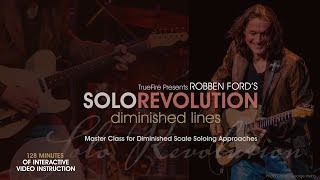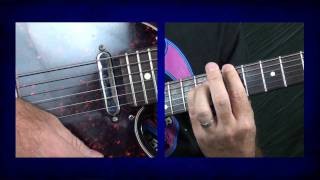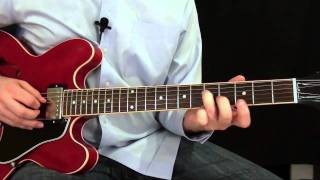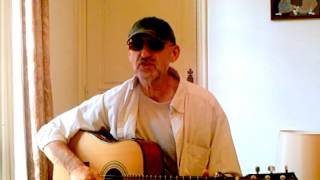Blues Guitar Lessons - West Coast Blues - Blind Blake - Variations
Published on 27 November 2017
Acoustic Blues Guitar Lessons http://www.play-blues-guitar.eu/menu-36-lessons-review.php
Free Lessons and News Letter Sign Up http://youtunerecords.com/lp/jblet.html
Sign Up Now and get these Free Goodies: Complete Robert Johnson Lesson Download, two MP3 Albums (Acoustic Blues Travellers and Blind Blake) and a mini-course of 7 streamed videos covering basic blues picking techniques.
Blake's dancing thumb - It's not just a case of thumb slipping across the basses - he also frequently changed the bass note order when he was playing alternating bass - take a look.
Jim
Playing blues guitar in the present day is a strange thing to try. Even the least well off in countries in the West are so much more well off than the old blues men who single handedly invented the sound that was the foundation of all jazz, rock and pop music of modern times. Even using blues guitar tabs, it's tough for us to grasp that spirit. The basic rhythms evidently {came from African roots, but present day African music is much richer in rhythmic variety and complexity, so how did that happen? It is likely that early 'guitars' were simple single stringed instruments made with a cigar box, or similar. It wasn't feasible to make music of a really complex nature, and mostly created a musical 'thunk', with very little variation in melody.
For some time in the Southern states of America, drums were prohibited, as were many things that raised the spirit of the negro slaves and encouraged thoughts of bravery or freedom. Possibly the pulsating sound of the blues came to sound like a drum, which may explain why the monotonic thumb strike method of playing was prevalent. In this style of playing, the beat was less complex and the thumb strike sounded like a drum beat. In those difficult times, a proficient player would play a monotonic bass pattern which was at the same tempo as a man's heart. This meant that the music would have an emotional appeal and didn't have to be thought about, or be musically complicated.
Another hypothesis relates to the labor that negro slaves were forced to carry out. Many types of hard labor involved rhythmic repetitive actions, like scything down cereal grass, turning the earth with a hoe, hitting with an axe or pushing over steel train rail. One can watch examples of this in old black and white films, when a group of slaves with long iron bars sing a repetitive work song and synchronize their movements so that the heavy steel rail is pushed over a fraction of an inch at the end of each line or chorus. Frequently the work song or field holler was divided into a call and a response performed by several groups in the work party. This phenomenon of call and response was employed in subsequent blues songs when performed by a duo, and was additionally very prominent in gospel music.
Even though modern music has developed complex patterns and danceable variations, the early rhythms can still be heard - the underlying guitar boogie is evident in a great number of rock standards over the past 60 years. The more complicated sound of ragtime blues guitar was the foundation of early jazz.
Deep River Blues Lesson http://www.youtube.com/watch?v=C4lMZxM5AFQ
More guitar blues music here http://www.youtube.com/watch?v=MWGIiuAHveI
 Elizabeth Reed Style Allman Brothers Solo
Elizabeth Reed Style Allman Brothers Solo
 Robben Ford's Solo Revolution: Diminished Lines -...
Robben Ford's Solo Revolution: Diminished Lines -...
 Robben Ford Guitar Lesson - #6 - Blues Motif Revol...
Robben Ford Guitar Lesson - #6 - Blues Motif Revol...
 Blues Guitar Lesson: Octaves a la Chitlins Con Car...
Blues Guitar Lesson: Octaves a la Chitlins Con Car...
 Gibson 61RI SG and Fender 1966 Vibrolux Tone Demo...
Gibson 61RI SG and Fender 1966 Vibrolux Tone Demo...
 Blues Rhythm Guitar Lesson - Key of E
Blues Rhythm Guitar Lesson - Key of E
 Eric Clapton Style Guitar Solo on a Flying V
Eric Clapton Style Guitar Solo on a Flying V
 Learn country lead solo guitar lesson Don Rich sty...
Learn country lead solo guitar lesson Don Rich sty...
 How to Play Cigar Box Guitar - Blues Turnarounds P...
How to Play Cigar Box Guitar - Blues Turnarounds P...
 12 bar blues guitar in G (Good Golly Miss Molly, L...
12 bar blues guitar in G (Good Golly Miss Molly, L...







